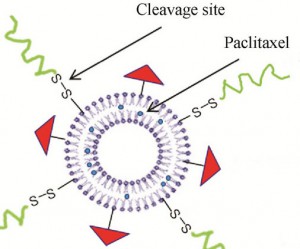Generally, cell-penetrating peptides consist of thirty or less amino acids, which are categorized as amphipathic or cationic depending on their sequences. They are increasingly driving attention as a non-invasive delivery technology for marcomolecules. Actually, delivery of a diverse set of cargoes has been attempted using different types of cell-penetrating peptides in vivo. Additionally, the relative lack of toxicity and cell specificity has enabled its widespread use in preclinical models.
 As is seen, cell-penetrating peptides are also called protein transduction domains or membrane transduction peptides, which are made up of less than thirty amino acids, with strong transport capacity. And, it is the special feature that allows cell-penetrating peptides to act as new drug delivery, without irritation and toxicity towards the host cells in a certain range of concentration. In addition, it is connected with mass chemical substances such as daptomycin. In recent years, scientists start to stress the structures and categories of cell-penetrating peptides, and they have divided the peptides into cationic and amphiphilic type. Specifically, the exocytosis introduced by cell-penetrating peptides has mass advantages. For example, it can help macromolecules having different molecular weights and natural properties come into cells. Furthermore, the toxicity is relatively lower while the applicable fields are larger.
As is seen, cell-penetrating peptides are also called protein transduction domains or membrane transduction peptides, which are made up of less than thirty amino acids, with strong transport capacity. And, it is the special feature that allows cell-penetrating peptides to act as new drug delivery, without irritation and toxicity towards the host cells in a certain range of concentration. In addition, it is connected with mass chemical substances such as daptomycin. In recent years, scientists start to stress the structures and categories of cell-penetrating peptides, and they have divided the peptides into cationic and amphiphilic type. Specifically, the exocytosis introduced by cell-penetrating peptides has mass advantages. For example, it can help macromolecules having different molecular weights and natural properties come into cells. Furthermore, the toxicity is relatively lower while the applicable fields are larger.
As for the cationic cell-penetrating peptides, the amino acids residues are made up of nuclear acid and lysine. In their sequences, there are also some hydrophilic or hydrophobic amino acid residues, which can be helpful in establishing a more effective spatial conformation. Furthermore, studying the influence that amino acids placed on cell-penetrating capacity is beneficial to explain its special structure features and guide the design of new cell-penetrating molecules like saxenda. Scientists also indicated a fact that cationic ion’s position might affect those residues in stable cell-penetrating peptides. Therefore, it is necessary to adjust other sequences, enabling a higher penetrating capacity for produced cell-penetrating peptides.
Cell-penetrating peptides can transport many substances to a variety of mammalian cells, including small molecule nucleic acids, proteins, peptides, plasmid DNA, and so on. Although the research on cell-penetrating peptides has been a hot topic in recent years, and advanced research did make great achievements in promoting the development of modern new drugs, it’s still not easy to determine its accurate mechanism.